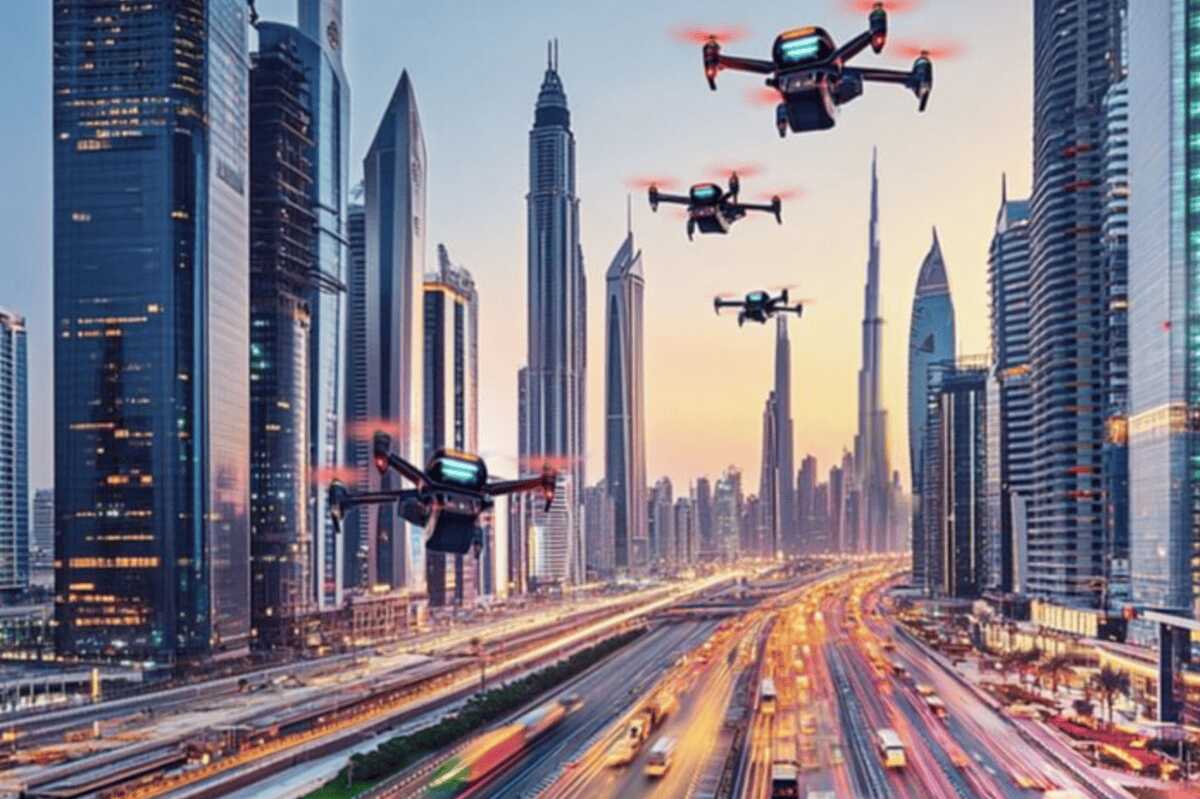The UAE has initiated the mapping of air corridors and is establishing a regulatory framework for piloted and autonomous flying taxis and cargo drones, as announced during the World Governments Summit. Aerial corridors and regulations are expected to be outlined within the next 20 months.
Connecting key locations
These aerial routes, WAM reported, will connect prominent international airports and iconic landmarks in the UAE, extending further to ensure the seamless integration of piloted and autonomous flying taxis and cargo drones throughout the nation’s urban areas.
To accomplish this goal, the General Civil Aviation Authority (GCAA) and the Advanced Technology Research Council (ATRC) – including the Technology Innovation Institute (TII) and ASPIRE – have formed a strategic partnership to exchange technical expertise in airspace management.
Safety and efficiency
By leveraging TII’s extensive network of stakeholders, which includes regulators, industry leaders, and researchers, this collaboration aims to create a thorough regulatory framework that guarantees safety and operational efficiency.
The partners are committed to ensuring the safe integration of piloted and autonomous air taxis and cargo drones into urban settings. The new air corridors will provide innovative solutions for transporting passengers and cargo, alleviating the burden on traditional road networks while enhancing connectivity.
This initiative represents a significant advancement in the UAE’s goal to pioneer the future of mobility. The deployment of safe, advanced, and sustainable transportation solutions aims to reduce congestion and establish a global standard for future urban mobility systems.
Transformative vision for air mobility
Saif Mohammed Al Suwaidi, director-general of GCAA, stated, “Air corridor mapping for piloted and autonomous air taxis and drones is a crucial milestone that will enable the seamless implementation of Advanced Air Mobility (AAM) into the UAE’s infrastructure. This initiative ensures the safe and efficient adoption of air mobility, delivering transformative solutions to urban transport and paving the way for a smarter, more connected future.”
Reshaping urban transportation
Dr. Najwa Aaraj, CEO of TII, remarked, “This transformative collaboration with GCAA is reshaping the future of urban transportation. By advancing airspace management and integrating piloted and autonomous air taxis and cargo drones, we are not only enhancing urban connectivity but also driving sustainable and accessible mobility solutions that will benefit future generations.”
Supporting sustainable economic growth
Stephane Timpano from ASPIRE noted, “Addressing real-time urban mobility challenges through innovative solutions like air taxis and drones is a major step forward. This initiative directly supports sustainable economic growth by creating a flexible and diverse transport system that eases pressure on urban infrastructure and fosters smarter, more resilient cities.”
Advancing AI technology
Moreover, Prof. Enrico Natalizio, chief researcher of the Autonomous Robotics Research Center at TII, commented, “At TII, we’re developing advanced AI-powered control, vision, and communication algorithms for autonomous systems that enable real-time decision-making for air taxis and drones. Having mastered this technology, we are able to propose methodologies for AAM corridors design to optimise routes, ensure collision avoidance, and integrate seamlessly with urban airspace, marking a key step toward efficient and safe autonomous air mobility in complex urban environments.”
Held under the theme ‘Shaping Future Governments’, this year’s summit convened over 30 heads of state and government, more than 80 international and regional organizations, and 140 government delegations.
Its agenda featured 21 global forums exploring major future trends and transformations, over 200 interactive sessions with more than 300 prominent speakers – including presidents, ministers, experts, thought leaders, and decision-makers – and over 30 ministerial meetings and roundtables attended by more than 400 ministers.








